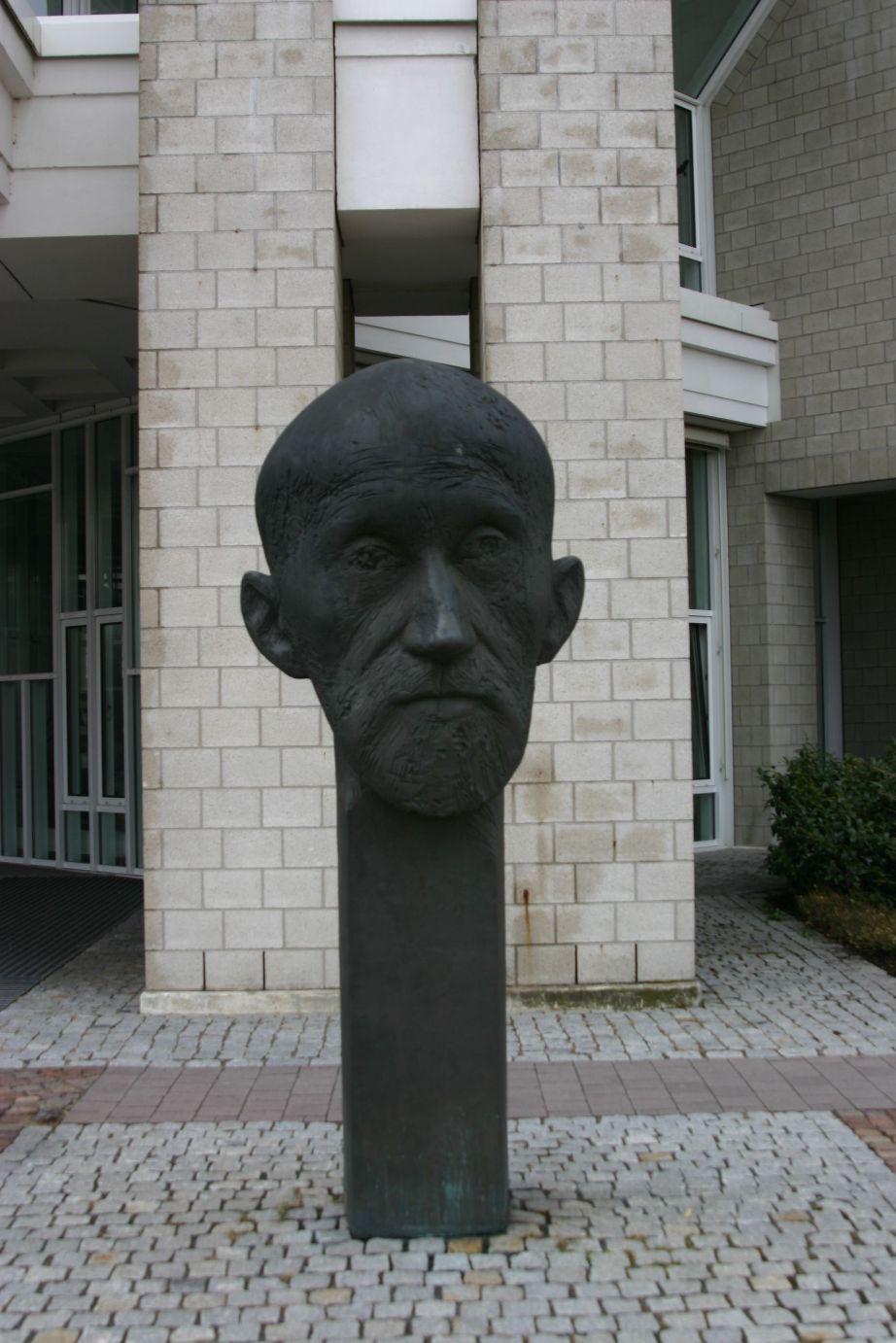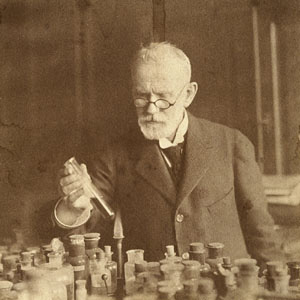<Back to Index>
- Immunologist Paul Ehrlich, 1854
- Poet Antonio Frederico de Castro Alves, 1847
- Leader of the Kurdistan Democratic Party Mustafa Barzani, 1903
PAGE SPONSOR
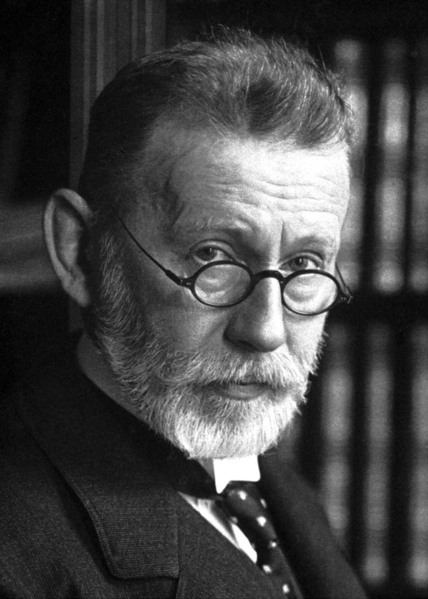
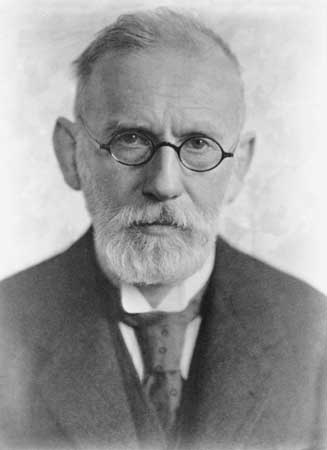
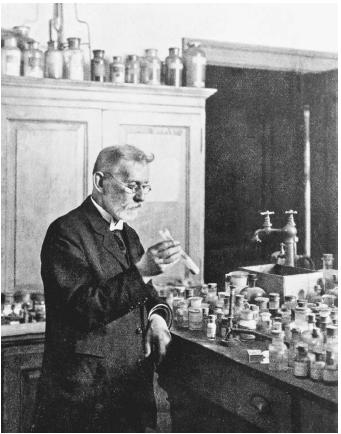
Paul Ehrlich (14 March 1854 – 20 August 1915) was a German scientist in the fields of hematology, immunology, and chemotherapy, and Nobel laureate. He is noted for curing syphilis and for his research in autoimmunity, calling it "horror autotoxicus". He coined the term chemotherapy and popularized the concept of a magic bullet.
Paul Ehrlich was born into a Jewish family in Strehlen, in the German Kingdom of Prussia, Province of Silesia, (now in Poland). As a schoolboy and student of medicine, he was interested in staining microscopic tissue substances.
In his dissertation at the University of Leipzig, he picked up the topic again ("Contributions to the Theory and Practice of Histological Staining", Beiträge zur Theorie und Praxis der histologischen Färbung). He married Hedwig Pinkus (then aged 19) in 1883. The couple had two daughters, named Stephanie and Marianne. After his clinical education and habilitation ("The Need of the Organism for Oxygen", Das Sauerstoffbedürfnis des Organismus) at the Charité in Berlin in 1886 he received a call from Robert Koch to join the Institute of Infectious Diseases in Berlin (1891).
Ehrlich spent two years in Egypt, recovering from tuberculosis. Thereafter he worked with his friend Emil Adolf von Behring on the development of a diphtheria serum. These works inspired Ehrlich's famous side - chain theory (Seitenkettentheorie) from 1897. This theory explained the effects of serum and enabled measurement of the amount of antigen. In 1896 Ehrlich became the director of the newly founded Institute of Serum Research and Examination (Institut für Serumforschung und Serumprüfung) in Steglitz (Berlin). In 1899 the institute was moved to Frankfurt (Main) and extended into the Royal Institute of Experimental Therapy (Institut für experimentelle Therapie). Here Ehrlich researched chemotherapy and infectious diseases. In 1904 Ehrlich became honorary professor of the University of Göttingen. Ehrlich received the Nobel Prize for Medicine together with Ilya Ilyich Mechnikov in 1908. In 1906 he discovered the structural formula of atoxyl, a chemical compound which had been shown to be able to treat sleeping sickness. Following this discovery, he tried to create a less toxic version of the medicament. In 1909 he and his student Sahachiro Hata developed Salvarsan, a treatment effective against syphilis.
Discovered in the fall of 1909, Salvarsan was in clinical use by 1910.
Salvarsan proved to be amazingly effective, particularly when compared
with the conventional therapy of mercury salts. Manufactured by Hoechst AG, Salvarsan became the most widely prescribed drug in the world. It was the most effective drug for treating syphilis until penicillin became available in the 1940s. His work illuminated the existence of the blood - brain barrier.
Erlich's daughter Marianne was married to the great German - Jewish mathematician Edmund Landau. Ehrlich died of a stroke in Bad Homburg in 1915, age 61. He is buried in the Juedischer Friedhof on Rat Beil Straße in Frankfurt am Main, Germany. His life is depicted in the movie Dr. Ehrlich's Magic Bullet, which focused on Salvarsan (arsphenamine, "compound 606"), his cure for syphilis. The "magic bullet" concept comes from the experience of 19th century German chemists with selectively staining tissues for histological examination, and in particular, selectively staining bacteria (Ehrlich was an exceptionally gifted histological chemist, and invented the precursor technique to Gram staining bacteria). Ehrlich reasoned that if a compound could be made that selectively targeted a disease - causing organism, then a toxin for that organism could be delivered along with the agent of selectivity. Hence, a "magic bullet"
would be created that killed only the organism targeted. A problem with
the use of the magic bullet concept as it emerged from its histological
roots is that people confused the dye with the agent of tissue selectivity and antibiotic activity. Prontosil, a sulfa drug whose active component is sulfanilamide, is a classic example of the fact that color is not essential to antibacterial activity. The concept of a "magic bullet" was fully realized with the invention of monoclonal antibodies. Paul Ehrlich's life and achievements were filmed 1940 in Hollywood by William Dieterle in Dr. Ehrlich’s Magic Bullet with Edward G. Robinson in the title role. The German Federal Institute for Vaccines and Biomedicines (Paul - Ehrlich - Institut, abbreviated PEI) is named after Paul Ehrlich.
